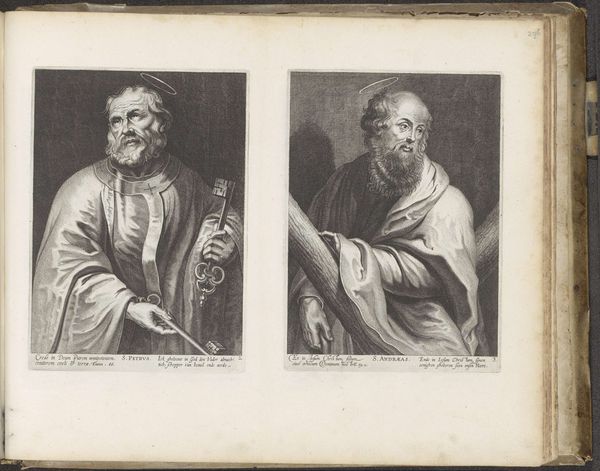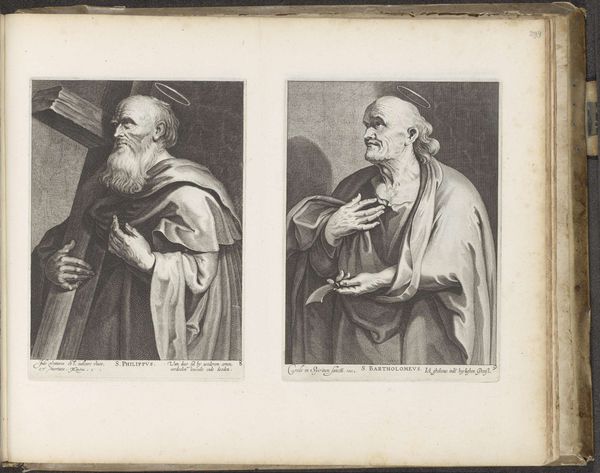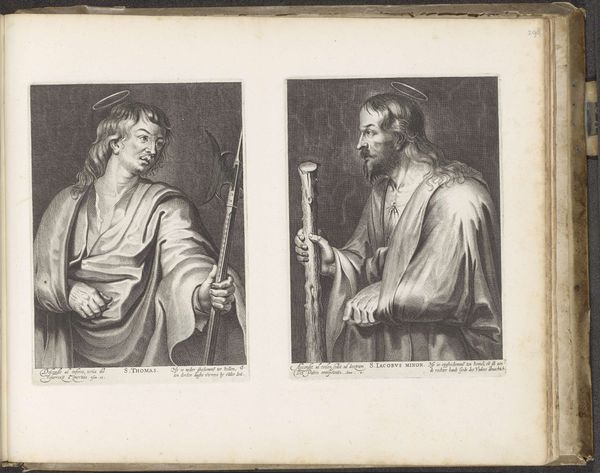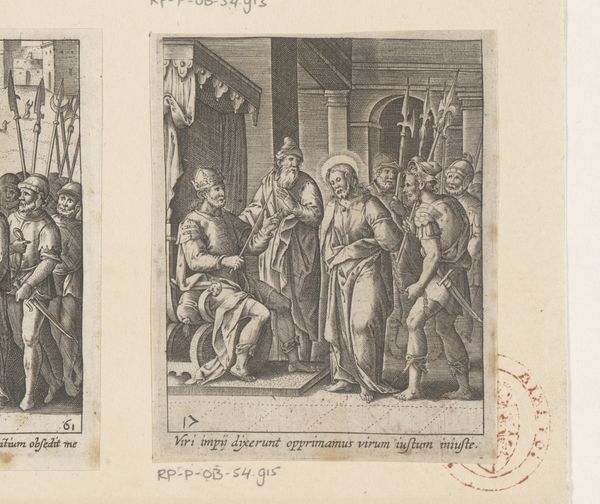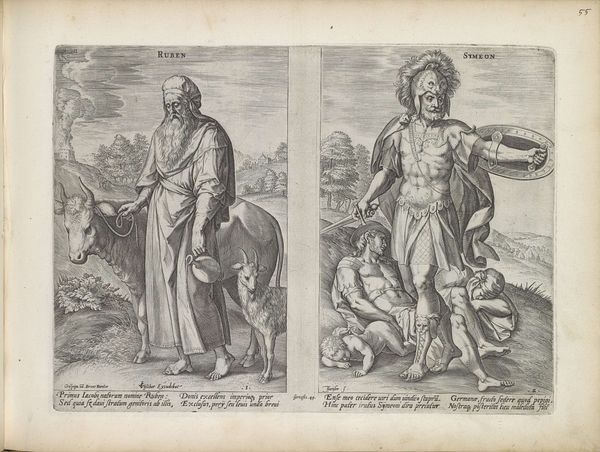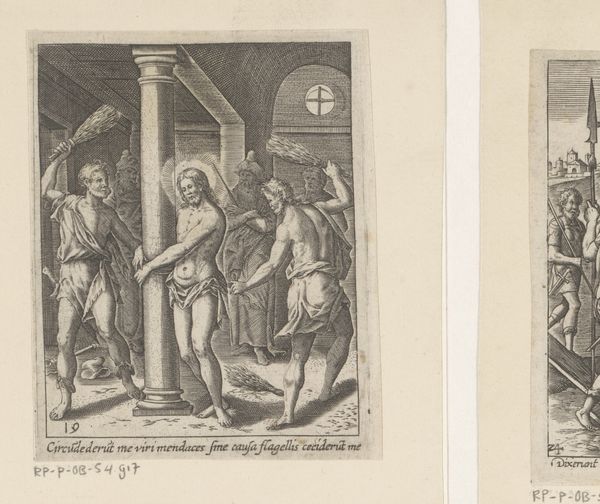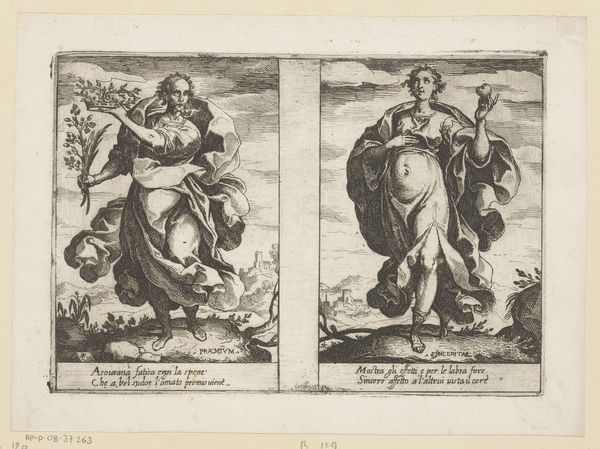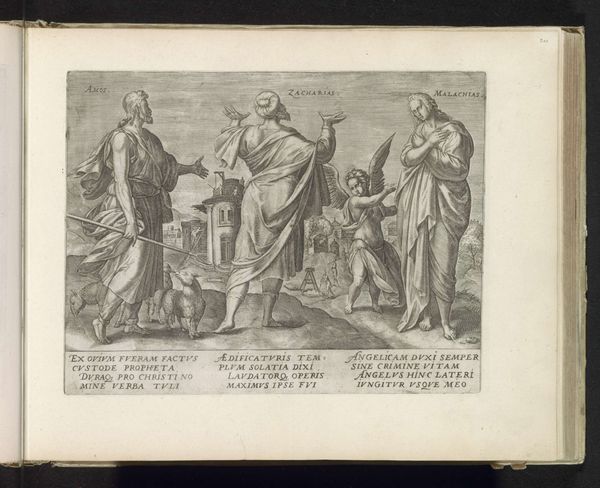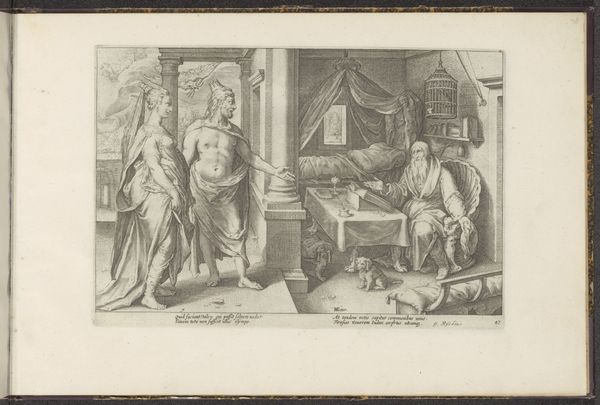
Apostel Jakobus de Meerdere / Apostel Johannes Possibly 1616 - 1654
0:00
0:00
print, engraving
#
baroque
# print
#
charcoal drawing
#
history-painting
#
engraving
Dimensions: height 199 mm, width 143 mm, height 199 mm, width 143 mm
Copyright: Rijks Museum: Open Domain
Curator: Here we have a fascinating print from Nicolaes Ryckmans, likely created sometime between 1616 and 1654, entitled "Apostel Jakobus de Meerdere / Apostel Johannes," residing in the Rijksmuseum. Editor: The immediate feeling is one of contrasted strength and ethereal grace, quite typical of Baroque sensibilities. The image has such distinct halves! Curator: Indeed. Let’s look at Ryckmans' compositional strategies. Notice the deliberate parallelism in the figures' poses, and the employment of shadow and light to enhance depth in both the images of Saint James the Greater, and Saint John. How does that semiotic construction manifest for you? Editor: The strategic use of chiaroscuro lends weight to St. James, with his attributes like the staff. His depiction has the air of authority; a tool often used when attempting to display prominent religious and historical figures. It is a familiar iconography used in asserting authority of the Church and solidifying faith through a visual language, in contrast, Saint John with the chalice, feels like light is emanating from the figure, not cast upon it. It is definitely intentional. Curator: Precisely! Notice the intricate details within each engraved line, creating subtle variations in tonality that define form, like that chalice. Each calculated mark accentuates the narrative of each saint. The halo of the staff bearer versus the saint of divinity. There is this opposition that creates the art! Editor: The medium, the printed engraving, too, played a huge part in circulating the idea and perception of Saints in early modern Europe. This isn't just devotional; it's also about the dissemination of visual and social ideals. Consider its function beyond pure aesthetics: a tool for religious messaging amid reformation and Counter-Reformation fervor. Curator: A beautiful encapsulation. It’s in works such as these that we see the blending of formal innovation and socio-cultural context, an artistic convergence with layers of meaning that speaks beyond its mere image. Editor: Absolutely, engaging with this piece offers insight into how the art served not only spiritual reflection but played an active role in shaping social attitudes and visual culture. A fine line work between what once was, and our impression now.
Comments
No comments
Be the first to comment and join the conversation on the ultimate creative platform.
